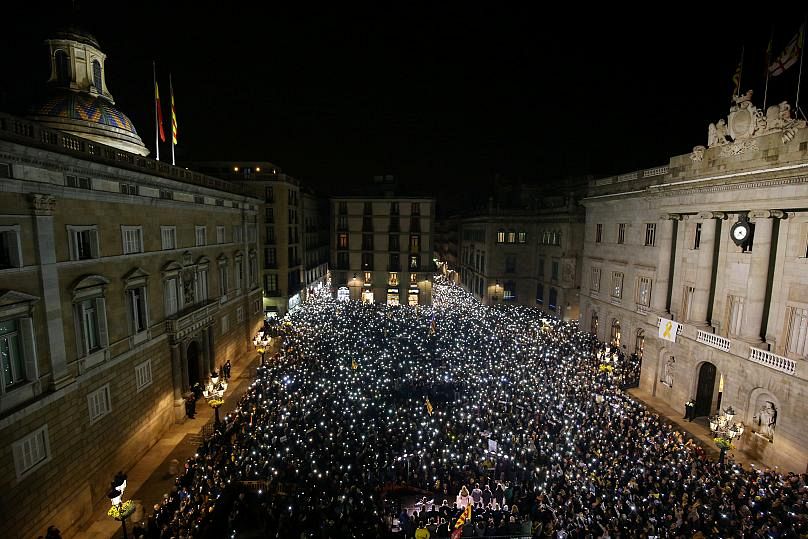Could this be the tool that ends all debates about the number of people who attend a demonstration?
Nearly a million people went out to the streets on September 11 last year to call for Catalan independence, according to Barcelona’s Guardian Urbana. However, the anti-independence civic society Societat Civil Catalana said there were only 225,000 people out in the streets. Meanwhile, the Spanish government claims than less that only 350,000 people made It to the protest march. With the varying figures, how does one get a true estimate of protest turnout?
The uncertainty is about to change with a new technology that promises to put an end to the discrepancies.
The technology was presented on Tuesday at the Mobile World Congress by its makers, the Computer Vision Centre at Universitat Autonoma de Barcelona.
A more "accurate" system
The technology, based on artificial intelligence, can count the number of people that appear in still or video images in big agglomerations with a margin of error of 10 to 20%.
According to the researchers, the new algorithm or neural network is "more accurate" than previous software of its kind.
"There will never again be a debate on how many people attended a rally," said Secretary of Telecommunications, Cybersecurity, and Digital Society for the government of Catalonia, Jordi Puignero who was present at the congress.
Creating an algorithm that replicates how the human brain processes information
The project's leader, Joost van de Weijer, told Euronews that the problem with estimating the number of persons in a demonstration is that they will not all be in a single image.
That's why he and his team worked on a learning method that trains vision algorithms to compare images — similar to how the human brain processes information.
The method works as follows, explains van de Weijer: "If the algorithm counts the number of people in an image and then counts the number of people of any cropped image from the large image, the number of people in the smaller image should be lower than in the large image."
This way, the computer has to learn that there are fewer people in the second picture than in the original, added the researcher.
The team's method can be used by professionals to improve the accuracy of crowd counting. "It is a step closer to an objective estimate of the number of persons, but certainlynot the last step," said van de Weijer.
The project, which was developed by the Computer Vision Centre of the Universidad Autonoma de Barcelona and the University of Florence, will be presented at the Computer Vision and Pattern Recognition Conference in Salt Lake City, Utah, next June.












